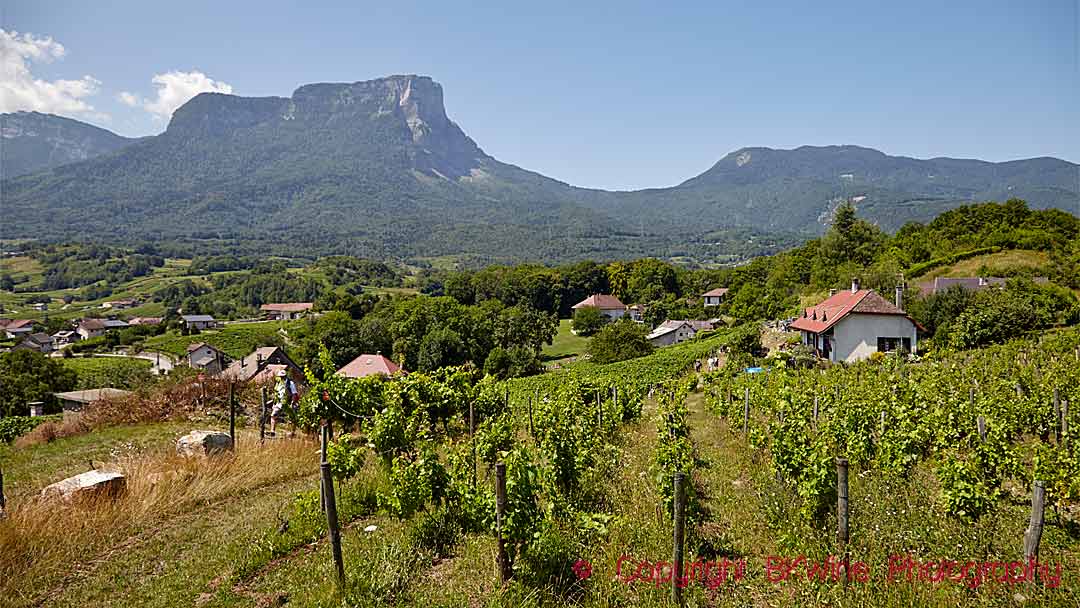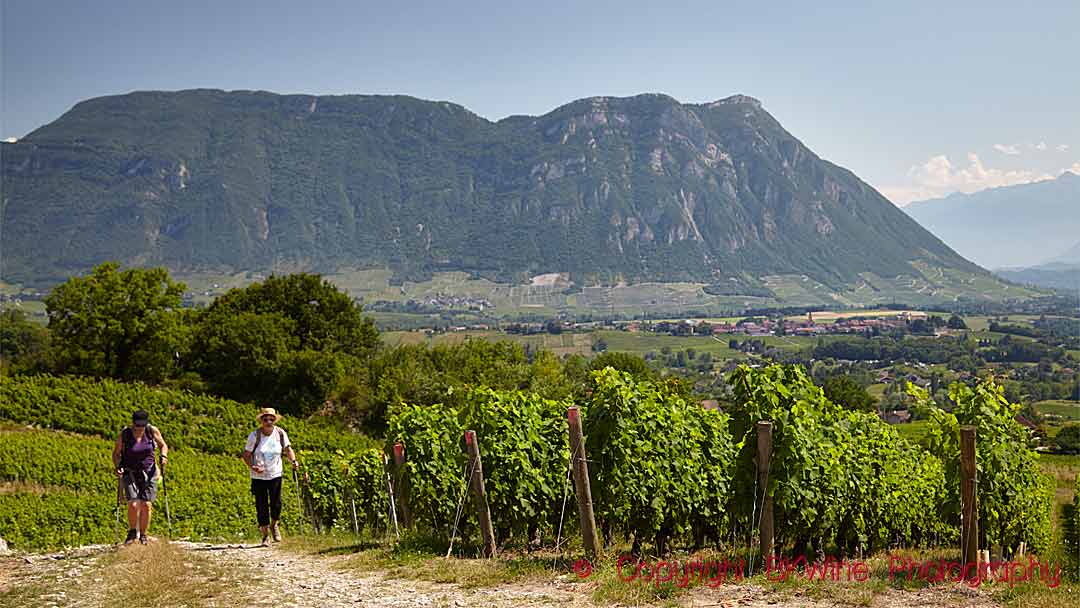Savoie is better known for its cheeses than for its wines. Everyone knows the names of at least some of the cheeses: reblochon, beaufort, tomme de savoie, abondance… But does anybody know what grapes they grow on the slopes of the Savoie Prealps? Most of the Savoie wines are sold in France. But producers are working hard to increase their exports. We have taken the pulse of Savoie. And it is not only the cheeses that are worth tasting. And it’s an opportunity to discover some new grape varieties.
Savoie’s wine surface is only 2,200 hectares (just under half of Chablis) but the region has over 20 different grape varieties and four appellations: Vin de Savoie, Roussette de Savoie, Seyssel and Crémant de Savoie.
This is a longer version of an article published on Forbes.com.
Many of the grape varieties are found nowhere else. Maybe it’s because they are a bit isolated up there in the mountains. The white jacquère and the red mondeuse are two examples. Altesse, gringet, molette, persan are some others. And would you be able to resist a wine made from the grape etraire de la dhui?
Altesse/roussette
Altesse produces aromatic wines, often of excellent quality, with good acidity and an appetizing fruit. The styles vary depending on the producer, but often the wines have a good body. Some producers age their altesse in oak barrels. There are almost 300 hectares of altesse in Savoie. When the altesse grapes ripen, they turn pink, which explains the name of the synonym roussette. The grape’s very own appellation is called Roussette de Savoie. Altesse is also the most common grape in AOP Seyssel.Domaine de l’Idylle 2019, AOP Roussette de Savoie Anne de Chypre
The wine is named after Princess Anne from Cyprus, who, according to legend, took altesse with her from her island when she became Duchess of Savoie through marriage. When I tasted the wine, both chardonnay and viognier came to my mind as the wine is pleasantly full-bodied and has a certain aromatic character. I also found aromas of pears and yellow apples, and there’s a refreshing acidity at the finish. Excellent. (~ 12 euros)
Dupasquier AOP Roussette de Savoie Marestel 2014
Roussette de Savoie has four crus, and the most famous is the steep slope of Marestal, near the village of Jongieux. This is a full-bodied, almost oily wine with ripe yellow fruit and apricots in a slightly oxidized style. Very pleasant, savoury and delicious. (~ 16 euros)
Jacquère
Jacquère has a good acidity and often a nose of citrus and acacia. It buds early, which is an advantage here, as spring frosts occur from time to time. Well-known jacquère wines can be found around the village of Chambéry, in appellations such as Vin de Savoie Abymes, Vin de Savoie Apremont and Vin de Savoie Chignin.
Château de la Violette 2019, AOP Vin de Savoie Abymes
Charles Henri Gayet has run the 16-hectare estate since the early 2000s. Relatively low alcohol content of 11.5% gives a light style wine. It is aromatic and a bit reminiscent of sauvignon blanc but fuller in the body. It has pleasant aromas of peaches and a good mouthfeel. Excellent wine. 100% jacquère. (~ 10 euros)
André and Michel Quenard Crémant de Savoie Extra Brut
In 2014, Savoie became the eighth French crémant region. The Quenard family has been making wine in Savoie for many generations and is one of the most famous producers in Savoie. Their crémant is 100% jacquère, and it is fresh with discreet toasted bread aromas, green apples, citrus and a dry and long aftertaste. Good volume in the mouth. (~15 euro)
Mondeuse
Mondeuse is an old grape variety that was grown before the phylloxera in several parts of eastern France. It barely survived the phylloxera and is now found on 300 hectares in Savoie. Mondeuse wines have lots of dark fruit and spices, and you are sometimes unprepared for the tannins that appear on the palate. This is not a wine for sipping at after ski.
La Belle Romaine 2019, Château de Mérande, Domaine Genoux, AOP Savoie Wine Arbin Mondeuse
I’m not a mondeuse expert, but I think this is a fairly typical mondeuse with firm tannins but still very balanced and savoury with aromas of tobacco, spices and ripe, dark berries. I like the style; it is definitely an exciting wine. Relatively low in alcohol, 12%. (~ 16 euros)
Chardonnay
Chardonnay is not a traditional Savoie grape, but in some places, it does very well.
Chardonnay 2016, Domaine Dupasquier, AOP Vin de Savoie
Very tasty and aromatic in a relatively unpretentious style with aromas of sweet fruit confit and apricots. Fresh citrus freshens up the palate. Quite full-bodied. An unusual chardonnay. Domaine Dupasquier has two hectares of chardonnay on the estate, and they give the wine long ageing in a steel tank. It is bottled after one year but released for sale only after 3–4 years. (~ 10 euros)
Two other grape varieties should be mentioned, roussanne and chasselas.
Chasselas is grown on breathtakingly beautiful vineyards along the south side of Lac Leman, around Evian and Thonon-les Bains. The wines are floral and refreshing, and quite unpretentious.
Roussanne, the famous white grape of the Rhône Valley, is also known locally in Savoie as bergeron. Some of the best come from AOP Vin de Savoie Chignin-Bergeron. The wines are powerful, and they cope well with oak ageing. The flavours remind me of dried apricots and honey.
Combining the local cheeses with the local wines is, of course, an excellent idea. The Savoyards also include cheese in many of their recipes. Cheese fondue is familiar to everyone. But even more local is the popular tartiflette savoyarde, a kind of potato gratin with reblochon, onions and bacon. It is warming and filling after your hike in the mountains.
And etraire de la dhui? Does it really exist? Yes, it does. It originates from the Isère valley, and although there are only about 6 hectares left, it is tenderly cared for by a few producers.


















